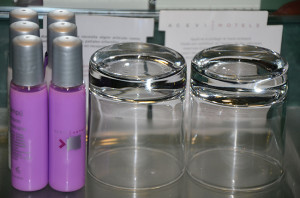A sequence of composition
Return to The Public (20th June):
My work plans in Birmingham changed over the three days giving me time to do some more photography before returning home. I decided I would try the sequence of composition and document my movement from the centre of the city out to The Public in West Bromwich. I had worked with The Public in the past and was aware of some of its troubled history so this felt like a very personal journey, it was the first time I had seen the building open and fully operational. I started with images of the hotel and my coats in the car. I then moved to my first sighting of the building, including the building works that seem to be taking place all around it. I particularly noted their notice that said they had now had 500,000 visitors which I framed behind the building works as for many visitors they are the first thing that can be seen.
Through the doors I then tried to capture some of the quirkiness of the interior, it is a building like no other and trying to convey that is quite difficult. The dominance of the colour pink on and in the building is certainly one of its more unusual features and seeing the red car parked in front of the pink window for some reason really made me laugh it was a shot I had to capture.
I was there first thing in the morning so there were very few people around and I felt quite conscious of taking images of people so tended to steer away from them. I did however, ask at reception if it was alright to take photographs in the building and they seemed more than happy for me to do so. There was a photographic exhibition on the ground floor of local students and I thought there was some really captivating work. One of the students had done some beautiful cityscapes around Birmingham capturing the feel of the canals and walkways.
It was good, after all the controversy, to see the building open and being able to document my visit visually seemed really important. I enjoyed working with the camera in this way and would like to work more on the ‘storytelling’ potential of my images.
